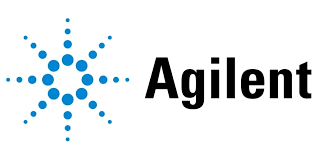Smart Air Purifiers Market Size, Share, Industry Trends and Forecast to 2033
This comprehensive report on the Smart Air Purifiers market delves into market dynamics, technological innovations, regional developments, and segment-specific insights over the forecast period from 2024 to 2033. It provides key data points, growth drivers, market size, and competitive analysis, offering a detailed roadmap for industry stakeholders.
| Metric | Value |
|---|---|
| Study Period | 2024 - 2033 |
| 2024 Market Size | $8.00 Billion |
| CAGR (2024-2033) | 8.7% |
| 2033 Market Size | $17.38 Billion |
| Top Companies | AirTech Innovations, PureAir Systems |
| Last Modified Date | 02 June 2025 |
Smart Air Purifiers (2024 - 2033)
Smart Air Purifiers Market Overview
What is the Market Size & CAGR of Smart Air Purifiers market in 2024?
Smart Air Purifiers Industry Analysis
Smart Air Purifiers Market Segmentation and Scope
Request a custom research report for industry.
Smart Air Purifiers Market Analysis Report by Region
Europe Smart Air Purifiers:
Europe represents a robust market segment with growth from 2.00 in 2024 to an anticipated 4.33 in 2033. European consumers are increasingly inclined toward energy-efficient and eco-friendly home appliances. The region’s progressive regulatory framework and strong focus on environmental sustainability further bolster the adoption of cutting-edge air purification solutions.Asia Pacific Smart Air Purifiers:
The Asia Pacific region shows promising growth with the market expanding from a size of 1.52 in 2024 to an estimated 3.30 in 2033. This growth is fueled by urbanization, rising disposable incomes, and a strong emphasis on incorporating smart home solutions in daily lives. Countries in this region are witnessing rapid technological adoption, making them prime markets for advanced air purification systems.North America Smart Air Purifiers:
North America continues to maintain a significant market presence with the market size increasing from 2.64 in 2024 to about 5.74 in 2033. The mature economy, combined with a high adoption rate of smart technologies and stringent environmental regulations, drives the extensive use of smart air purifiers in residential and commercial spaces, reinforcing its leadership in the market.South America Smart Air Purifiers:
South America, with regional market figures increasing from 0.76 in 2024 to 1.64 in 2033, is emerging as a key growth area. The region is experiencing a gradual shift towards modern, smart home technologies as public awareness about air pollution and environmental health issues rises. This trend is supported by local governments and regulatory bodies that are initiating policies to improve indoor air quality.Middle East & Africa Smart Air Purifiers:
The Middle East and Africa region is also witnessing steady growth, with the market expanding from a size of 1.08 in 2024 to 2.36 in 2033. Increased urbanization, rising awareness about health hazards associated with air pollution, and the growing penetration of smart home devices are key factors contributing to the market’s evolution in this region.Request a custom research report for industry.
Smart Air Purifiers Market Analysis By Technology
Global Smart Air Purifiers Market, By Technology Market Analysis (2024 - 2033)
The by-technology segment analyses various purification methods such as HEPA filtration, ionization, UV light, and ozone generation. HEPA filtration remains dominant due to its superior performance in capturing particulate matter, while ionization and UV light technologies are gaining traction for their ability to neutralize microbial contaminants. Ozone generators, though less common, are positioned as niche solutions for specific industrial applications. Continuous innovation in these technologies drives market differentiation and customer preference.
Smart Air Purifiers Market Analysis By End User
Global Smart Air Purifiers Market, By End-User Market Analysis (2024 - 2033)
Segmenting by end-user, the market distinguishes between residential, commercial, and industrial applications. Residential applications hold a significant share owing to the growing awareness of indoor air quality. Commercial establishments, such as offices and public spaces, increasingly adopt smart air purifiers to ensure a healthy environment, while industrial applications are focused on specialized air handling in manufacturing and production facilities.
Smart Air Purifiers Market Analysis By Feature
Global Smart Air Purifiers Market, By Feature Market Analysis (2024 - 2033)
The feature segmentation focuses on smart home integration, real-time monitoring, and remote control support. These features provide enhanced usability and connectivity, allowing consumers to control air purifiers via mobile applications or voice commands. The demand for these advanced features is rising as they contribute significantly to energy efficiency, convenience, and overall improved air quality management.
Smart Air Purifiers Market Analysis By Capacity
Global Smart Air Purifiers Market, By Capacity Market Analysis (2024 - 2033)
Capacity-based segmentation considers the application size ranging from small room purifiers to medium and large room or space units. Small room purifiers are ideal for individual apartments, whereas medium and large capacities cater to offices, commercial spaces, and industrial settings. This segmentation is critical in ensuring that devices are appropriately scaled for the intended environment, providing optimal purification efficiency.
Smart Air Purifiers Market Analysis By Price
Global Smart Air Purifiers Market, By Price Range Market Analysis (2024 - 2033)
The by-price segment classifies smart air purifiers into budget-friendly, mid-range, and premium categories. Budget-friendly models dominate in terms of volume, appealing to cost-conscious consumers while still offering a range of smart features. Mid-range purifiers strike a balance between performance and cost, and premium models incorporate cutting-edge technology and design elements, catering to consumers seeking the highest level of performance and innovation.
Smart Air Purifiers Market Trends and Future Forecast
Request a custom research report for industry.
Global Market Leaders and Top Companies in Smart Air Purifiers Industry
AirTech Innovations:
AirTech Innovations is a leading name in the smart air purification industry, known for its advanced technology and commitment to sustainable practices. The company focuses on integrating IoT and AI customer-centric features in its offerings, making it a pioneer in smart home air quality solutions.PureAir Systems:
PureAir Systems has established itself as a global leader by delivering high-performance air purifiers with state-of-the-art filtration technologies. Their focus on quality, innovation, and strategic global partnerships has positioned them as a trusted brand among consumers and businesses alike.We're grateful to work with incredible clients.









Related Industries
FAQs
What is the market size of smart Air Purifiers?
The smart air purifiers market is projected to reach $8 billion with a CAGR of 8.7% over the next several years. This steady growth reflects increasing consumer demand for cleaner air and advancements in purification technology.
What are the key market players or companies in the smart Air Purifiers industry?
Leading players in the smart air purifiers market include companies like Dyson, Philips, and Honeywell. These firms dominate through innovative technology, strong brand presence, and extensive distribution networks, contributing to market expansion.
What are the primary factors driving the growth in the smart Air Purifiers industry?
Key drivers of growth in the smart air purifiers market include rising awareness of air quality issues, health concerns associated with pollutants, and technological advancements in filtration systems, enhancing consumer preferences for smarter solutions.
Which region is the fastest Growing in the smart Air Purifiers?
North America is expected to be the fastest-growing region, with market size projected to grow from $2.64 billion in 2024 to $5.74 billion by 2033. This growth is driven by heightened awareness of air quality and advanced technologies.
Does ConsaInsights provide customized market report data for the smart Air Purifiers industry?
Yes, ConsaInsights offers tailored market report data in the smart air purifiers industry, focusing on specific segments or regions to meet client needs and enhance decision-making processes.
What deliverables can I expect from this smart Air Purifiers market research project?
Expected deliverables include an in-depth market analysis report, competitive landscape overview, consumer insights, trends, regional analysis, and detailed forecasts for various segments within the smart air purifiers market.
What are the market trends of smart Air Purifiers?
Current trends include a shift towards smart home integration, reliance on real-time monitoring features, and increasing demand for eco-friendly purifiers, aligning with consumer preference for sustainability and enhanced technology.
Customize Smart Air Purifiers market research report
- ✔ Get in-depth analysis of Smart Air Purifiers market size, growth, and forecasts.
- ✔ Understand Smart Air Purifiers's regional dynamics and industry-specific trends.
- ✔ Identify potential applications, end-user demand, and growth segments in Smart Air Purifiers
